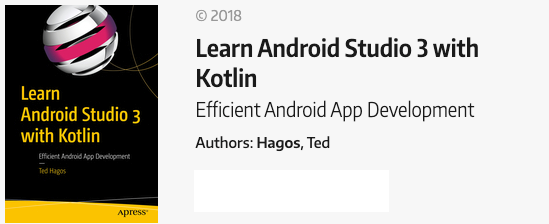Menu on Android ToolBar, using XML
You can create a menu for an app in 3 steps. First is to create a menu resource file which will contain all the menu items, Next steps is to inflate the menu file and attach it to a Menu object and lastly, handle the events for each menu item.
Create a menu folder in the under the app/res folder of the project. On the Project Window, use the context menu of Android Studio; right-click on the res folder then New > Android Resource Directory
Next, right click the app/res/menu folder, choose New > Menu Resource File, give the new menu a name, like “main_menu”. This will create the file “app/res/menu/main_menu.xml”.
Put some items in the menu file, follow the codes in listing 1.
listing 1. /app/res/menu/main_menu.xml
<?xml version="1.0" encoding="utf-8"?>
<menu xmlns:android="http://schemas.android.com/apk/res/android">
<item android:id="@+id/menuFile"
android:title="@string/menuFile"
/>
<item android:id="@+id/menuEdit"
android:title="@string/menuEdit"
/>
<item android:id="@+id/menuHelp"
android:title="@string/menuHelp"
/>
<item android:id="@+id/menuExit"
android:title="@string/menuExit"
/>
</menu>
You will also need to create the corresponding XML entries for @string/menuFile, @string/menuEdit, @string/menuHelp and @string/menuExit in the /app/res/value/strings.xml file. You can use Andr0id Studio’s Quick Fix so you don’t have to do it manually. To use Quick Fix, click on the text @string/menuFile, then press OPTION + ENTER if you’re on macOS; it’s ALT + ENTER for Windows and Linux.
To inlate and attach the menu item to the ActionBar, you need to override the onCreateOptionsMenu() in MainActivity. This project targets API level 23 (Marshmallow) so the onCreateOptionsMenu function will be called after the onCreate callback. If the project is API level 10 or lower, the onCreateOptionsMenu will only be called when the user clicks the hardware menu button.
listing 2. onCreateOptionsMenu
override fun onCreateOptionsMenu(menu: Menu?): Boolean {
menuInflater.inflate(R.menu.main_menu, menu)
return super.onCreateOptionsMenu(menu)
}
We can intercept the menu item events by overriding onOptionsItemSelected. Each time a menu item is clicked or touched by the user, the Android runtime calls this function. Listing 3 shows a simple way to handle the event.
listing 3. onOptionsItemSelected
override fun onOptionsItemSelected(item: MenuItem?): Boolean {
if(item?.itemId == R.id.menuFile) {
showMessage(“File Menu “) // user defined function
return true
}
}
The Android runtime passes the MenuItem object each time it calls onOptionsItemSelected. We can use this object route program logic via if-else constructs. But using Kotlin’s when might be more appropriate. See listing 4 for a complete code listing of hte MainActivity.
NOTE: I used the safe-call operator (?.) in the expression item?.itemId because MenuItem is declared as a nullable type. There is a chance that it might be null.
listing 4. MainActivity.Kt
import android.support.v7.app.AppCompatActivity
import android.os.Bundle
import android.support.design.widget.Snackbar
import android.view.Menu
import android.view.MenuItem
import kotlinx.android.synthetic.main.activity_main.*
class MainActivity : AppCompatActivity() {
override fun onCreate(savedInstanceState: Bundle?) {
super.onCreate(savedInstanceState)
setContentView(R.layout.activity_main)
}
override fun onCreateOptionsMenu(menu: Menu?): Boolean {
menuInflater.inflate(R.menu.main_menu, menu)
return super.onCreateOptionsMenu(menu)
}
override fun onOptionsItemSelected(item: MenuItem?): Boolean {
when(item?.itemId) {
R.id.menuFile -> {
showMessage("File menu")
return true
}
R.id.menuEdit -> {
showMessage("Edit menu")
return true
}
R.id.menuHelp -> {
showMessage("Help menu")
return true
}
R.id.menuExit -> {
showMessage("Exit")
return true
}
}
return super.onOptionsItemSelected(item)
}
private fun showMessage(msg:String) {
Snackbar.make(root_layout, msg, Snackbar.LENGTH_LONG).show()
}
}
NOTE: This project used the Snackbar control. If you will follow this example, you need to add the ’com.android.support:design’ in the dependencies entries of the build.gradle file (see this post for instructions http://bit.ly/usingsnackbar)
